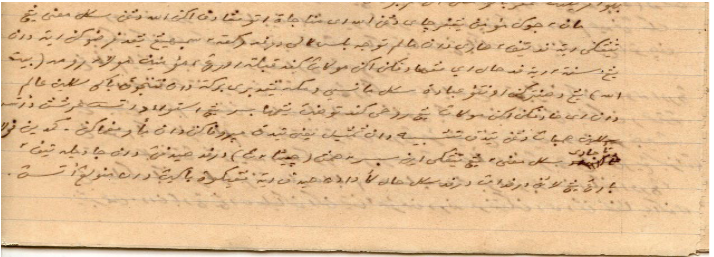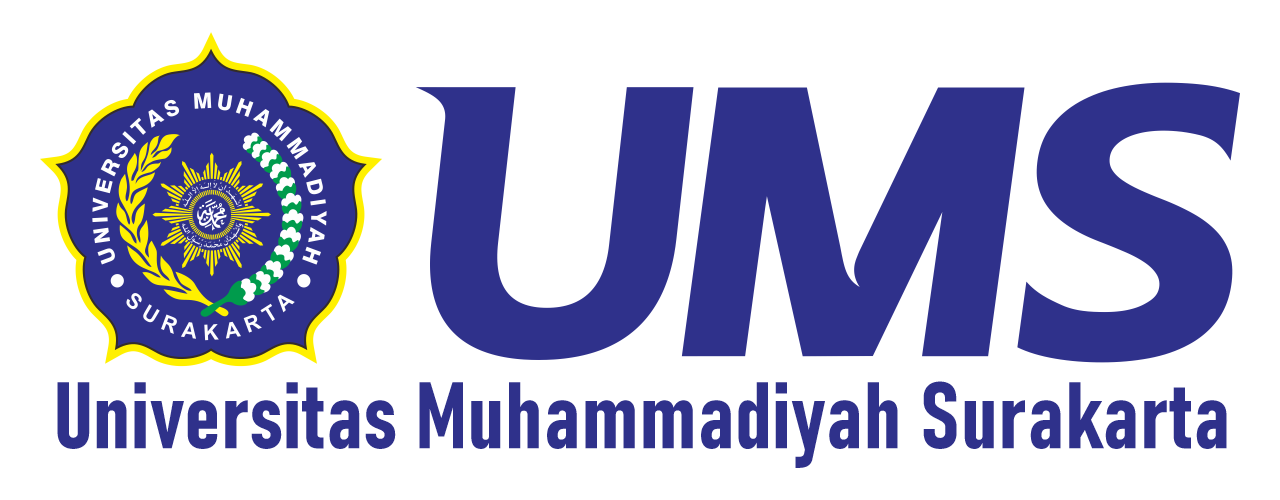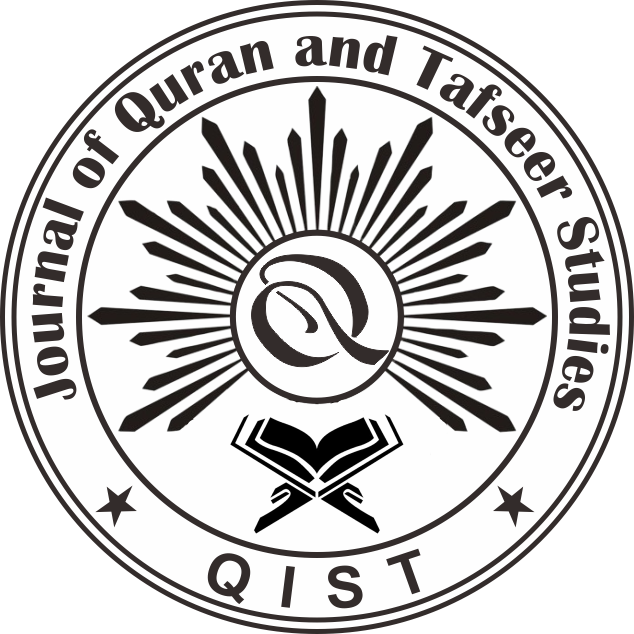THE PATTERN OF SUFISM ON INTERPRETATION OF Q.S. AL-FATIHAH IN THE TAFSIR MANUSCRIPT BY M. BASIUNI IMRAN SAMBAS, WEST KALIMANTAN
DOI:
https://doi.org/10.23917/qist.v2i2.1472Keywords:
Sufism Pattern, Interpretation of Q.S. Al-Fatihah, M. Basiuni Imran, SambasAbstract
Basiuni Imran is a 20th-century Sambas scholar who once studied with M Rasyid Ridha, so Rasyid Ridha's Islamic reforms ideas were also internalized by M. Basiuni Imran in some of the educational institutions in Sambas. However, in the interpretation, especially the Tafsir of Q.S Al-Fatihah M. Basiuni Imran does not accommodate the value of Islamic reform but interprets it with a Sufistic pattern. On the other hand, no solid information has been found about his Tarekat affiliations or Tarekat tendencies, thus strengthening the indication of his Sufism. Therefore, this research needs to be conducted. This study is library research with a descriptive-analytic model and uses the theory of genealogy and actor networks as an analytical framework. The conclusion of this article explains that the pattern of Sufism narrated by M. Basiuni Imran in interpreting Q.S. Al-Fatihah is by correlating Q.S. Al-Fatihah with Prayers. According to him, prayer is not only done with physical actions but also needs to focus the heart and soul on Allah SWT. He illustrated with the Qibla physically the direction of the Ka’bah is the Qibla during prayer. But in essence, the Qiblah faces the heart to Allah SWT. The factors that influence M. Basiuni Imran's Sufism thought are 1) the relationship of M. Basiuni Imran with some of his Sufism teachers, 2) the socio-religious conditions when writing the interpretation, and 3) the relationship between the book of Sufism and the book of interpretation by M. Basiuni Imran.
References
A. Muis Ismail. Mengenal Muhammad Basiuni Imran (Maharaja Sambas). Laporan Hasil Penelitian. Pontianak: FISIP Universitas Tanjungpura, 1993.
Adiansyah, Ridho, and Nurul Faezah binti Yahya. "KHAMR IN THE QUR'AN (THEMATIC STUDY OF TAFSIR IBN JARIR AL-TABARI)." QiST: Journal of Quran and Tafseer Studies 2, no. 1 (November 30, 2022): 1–17. https://doi.org/10.23917/qist.v2i1.1208.
Alhaj, Ali Albashir Mohammed. "Exploring Syntactic and Cultural Problems Faced By Translators in Translating the Quranic Arabic Hope Word L-Amalu لَمَألْا in Surahs Al-Hijr and Al-Kahf Into English." QiST: Journal of Quran and Tafseer Studies 2, no. 2 (2023): 116–33. https://doi.org/10.23917/qist.v2i2.1679.
Arsam, Hawasi Bin, Ahmad Munif Suratmaputra, Wendi Parwanto, and Sadari Sadari. "Tafsir Ayat Al-Siyam Karya M. Basiuni Imran, Sambas, Kalimantan Barat: Studi Kritis Atas Genealogi Pemikiran Dan Epistemologi Tafsir." MISYKAT: Jurnal Ilmu-Ilmu Al-Quran, Hadist, Syari'ah Dan Tarbiyah 4, no. 2 (2019): 185. https://doi.org/10.33511/misykat.v4n2.185-214.
Azyumardi Azra. Jaringan Ulama Timur Tengah Dan Kepulauan Nusantara Abad XVII Dan XVIII. Jakarta: Kencana, 2004.
"Berapa Lama Waktu Yang Dibutuhkan Untuk Mengubah Kebiasaan? Halaman All - Kompas.Com," n.d.
Faiz, Muhammad. "Khazanah Tasawuf Nusantara: Tarekat Naqsyabandiyyah Khalidiyyah Di Malaysia." 'Anil Islam 9, no. 2 (2016): 182–210.
Gusmian, Islah. Khazanah Tafsir Indonesia: Dari Hermeneutika Hingga Ideologi. Yogyakarta: LKiS, 2013.
Hamid Enayat. Modern Islamic Political Thought. London: Mc Millan, 1982.
Haris, Didik M Nur, and Rahimin Affandi Abd Rahim. "Pemikiran Keagamaan Muhammad Basuni Imran." Al-Banjari: Jurnal Ilmiah Ilmu-Ilmu Keislaman 16, no. 2 (2017): 1. https://doi.org/10.18592/al-banjari.v16i2.1464.
Harun, Mohd. Faizal. Tasawuf Dan Tarekat Sejarah Perkembangan Dan Alirannya Di Malaysia. Malaysia: UUM Press, 2015.
Ismail, Norbani B. "The Qur'anic Exegesis, Reformism, and Women in Twentieth Century Indonesia." Studia Islamika 24, no. 3 (2017): 469–501. https://doi.org/10.15408/sdi.v24i3.5187.
Jabbar, Luqman Abdul. "Tafsir Al-Quran Pertama Di Kalimantan Barat." Khatulistiwa: Journal of Islamic Studies 5, no. 1 (2015): 100–111.
Jaelani. "Sultan Muhammas Syafiuddin II: Pemimpin Kharismatik Dari Ujung Utara Borneo Barat." Khatulistiwa 4, no. 2 (2014): 127–38.
M. Basiuni Imran. Kisah Perjalanan M. Basiuni Imran (Manuskrip). Sambas, Kalimantan Barat: Museum Tamaddun, n.d.
———. Naskah Tafsir Qs. Al-Fatihah. Sambas: Museum Tamaddun, 1935.
M.Basiuni Imran. Buku Harian M. Basiuni Imran (Manuskrip). Sambas, Kalimantan Barat: Museum Tamaddun, 1926.
———. Surat Menyurat (Manuskrip) M. Basiuni Imran. Sambas, Kalimantan Barat: Museum Tamaddun, 1957.
Mahmudulhassan, M, W Waston, and Andri Nirwana AN. "The Rights and Status of Widows in Islam: A Study from the Perspective of Multicultural Islamic Education in the Context of Bangladesh." Multicultural Islamic Education Review 1, no. 1 (September 23, 2023): 01–14. https://doi.org/10.23917/mier.v1i1.2674.
Makarim, Muhmmad Ghifari, Hikmawati Rahayu, and Mulia Mardi. "ROLAND BARTHES' SEMIOTIC ANALYSIS OF THE MEANING OF HARAM IN THE QURAN." QiST: Journal of Quran and Tafseer Studies 2, no. 3 (September 27, 2023): 331–46. https://doi.org/10.23917/qist.v2i3.2574.
Michel Foulcault. The Archaeology of Knowladge. New York: Row Publisher, 1976.
Mike Michael. Actor-Network Theory. London: SAGE Publications, 2017.
Moch. Faizal Harun dan M. Hazwan. Sejarah Tarekat: Pertumbuhan Dan Penyebaran Di Dunia Islam. Malaysia: UUM Press, 2018.
Nasrullah, Nasrullah, Ahmad M Sewang, Syamsudduha Syamsudduha, and Nurman Said. "Pembaruan Pemikiran Pendidikan Islam Muhammad Basiuni Imran (1906-1976 M)." Jurnal Diskursus Islam 6, no. 1 (2018): 135–55. https://doi.org/10.24252/jdi.v6i1.7056.
Nugroho, Kharis, Muhammad Zawil Kiram, and Didik Andriawan. "THE INFLUENCE OF HERMENEUTICS IN DOUBLE MOVEMENT THEORY (CRITICAL ANALYSIS OF FAZLURRAHMAN'S INTERPRETATION METHODOLOGY)." QiST: Journal of Quran and Tafseer Studies 2, no. 3 (August 21, 2023): 275–89. https://doi.org/10.23917/qist.v2i3.2531.
Pabali H. Musa. Sejarah Kesultanan Sambas Kalimantan Barat: Kajian Naskah Raja-Raja Dan Silsilah Raja Sambas. Pontianak: STAIN Press, 2003.
Parwanto, Wendi. "Konstruksi Dan Tipologi Pemikiran Muhammad Basiuni Imran (1885-1976) Sambas, Kalimantan Barat Dalam Literatur Tafsir." Substantia: Jurnal Ilmu-Ilmu Ushuluddin 21, no. 1 (2019): 61. https://doi.org/10.22373/substantia.v21i1.4476.
———. "Struktur Epistemologi Naskah Tafsir Surat Al-Fatihah Karya Muhammad Basiuni Imran Sambas, Kalimantan Barat." Jurnal At-Tibyan: Jurnal Ilmu Alquran Dan Tafsir 4, no. 1 (2019): 143–63. https://doi.org/10.32505/tibyan.v4i1.783.
———. Struktur Epistemologi Naskah Tafsir Surat Tujuh (Tujuh Surat) Karya M. Basiuni Imran, Sambas: Kalimantan Barat. Yogyakarta: UIN Sunan Kalijaga, 2019.
———. Struktur Epistemologi Tafsir Surat Tujuh Karya M. Basiuni Imran, Sambas, Kalimantan Barat. Yogyakarta: Thesis, UIN Sunan Kalijaga, 2019.
Patmawati, Patmawati, and Elmansyah Elmansyah. "Eksistensi Tasawuf Di Kalimantan Barat: Kajian Terhadap Perkembangan Tarekat." Handep: Jurnal Sejarah Dan Budaya 3, no. 1 (2019): 75–100. https://doi.org/10.33652/handep.v3i1.56.
Pijper GF. Beberapa Studi Tentang Sejarah Islam Di Indonesia 1900-1950. Jakarta: Universitas Indonesia Press, 1985.
Puslitbang Kemenag RI. Ensiklopedi Pemuka Agama Nusantara. 1st ed. Jakarta: Puslitbang Kemenag RI, 2016.
Riddell, Peter G. "Variations on an Exegetical Theme: Tafsīr Foundations in the Malay World." Studia Islamika 21, no. 2 (2014): 259–92. https://doi.org/10.15408/sdi.v21i2.1072.
Rozy, Yahya Fathur, Anass Benichou, and Nagoor Gafoordeen. "THE HERMENEUTICS INFLUENCE ON FEMINIST EXEGESIS: A CASE STUDY ON AMINA WADUD." QiST: Journal of Quran and Tafseer Studies 2, no. 3 (October 7, 2023): 369–81. https://doi.org/10.23917/qist.v2i3.2908.
Setiawan, Muhammad Andi, and Yeti Dahliana. "REGULATIONS FOR MOSQUE AND MUSHALA VOICES IN THE PERSPECTIVE OF THEMATIC INTERPRETATION ON VOICE RULE IN WORSHIP." QiST: Journal of Quran and Tafseer Studies 1, no. 2 (August 8, 2022): 223–37. https://doi.org/10.23917/qist.v1i2.1074.
Siregar, Hamka. "Dynamics of Local Islam: Fatwa of Muhammad Basiuni Imran, the Grand Imam of Sambas, on the Friday Prayer Attended By Fewer Than Forty People." Al-Albab 2, no. 2 (2013): 187–202. https://doi.org/10.24260/alalbab.v2i2.35.
Syamsuddin, Sahiron. Hermeneutika Dan Pengembangan Ulumul Qur'an. Yogyakarta: Nawesea Press, 2009.
Wendi Parwanto. "Muhammad Basiuni Imran: Tokoh Legendaris Islam, Sambas, Kalimantan Barat Abad 20 M." Jurnal Al-Fanar 5, no. 1 (2022): 57–70. https://doi.org/10.33511/alfanar.v5n1.57-70.
———. "Structure of Epistemology and Sufism Patterns on Malay-Jawi Interpretation: The Case of Q . S . Al-Fatihah Interpretation in Nurul Ihsan by Said Bin." Al-Kawakib 3, no. 2 (2022): 130–38.
———. "VERNAKULARISASI TAFSIR AL-QUR'AN DI KALIMANTAN BARAT (Studi Atas Tafsir Ᾱyāt Aṣ-Ṣiyām Karya Muhammad Basiuni Imran)." Suhuf 15, no. 1 (2022): 107–22.

Downloads
Submitted
Accepted
Published
How to Cite
Issue
Section
License
Copyright (c) 2023 Wendi Parwanto, Engku Ahmad Zaki Engku Alwi, Isaac Danoso, Rukayyah Reichling, Maria Carolina Gonçalves

This work is licensed under a Creative Commons Attribution 4.0 International License.
















